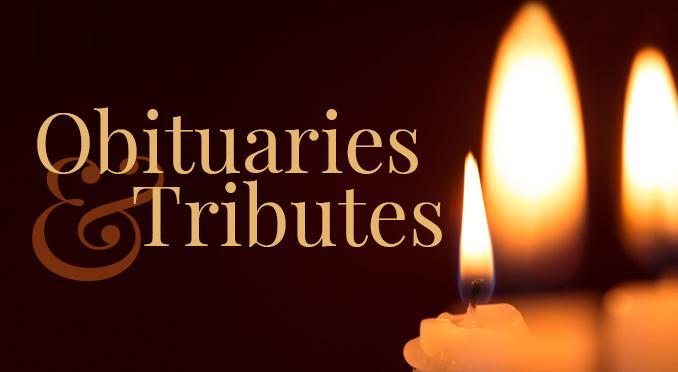

Burial
Traditionally, a burial service follows a visitation and funeral service in the funeral home, church, or other place of worship. You have the option of having the remains interred (earth burial), or it may be entombed in a crypt inside a mausoleum (above ground burial). Family preference and traditions or religious requirements are often a factor for choosing burial. Decisions to be made include the cemetery to be used, a grave location, time of graveside service, the type of outer burial container and the style and design of the memorial.
Cemetery Types
Monumental cemetery: A monumental cemetery is the traditional style of cemetery where headstones or other monuments made of marble or granite rise vertically above the ground. There are countless different types of designs for headstones, ranging from very simple to large and complex.
Memorial Park: A memorial park is where each grave is marked with a commemorative plaque, usually made of bronze that is placed horizontally at the head of the grave at ground-level on a granite base. Families should be involved in the design and provide the information contained on the plaque. Designs vary from standard emblems to photographic imagery cast into the bronze.
Mausoleum: A mausoleum is an external free-standing building generally constructed of solid granite or poured in place reinforced concrete with granite finishes. Mausoleums provide an enclosed interment space or burial chamber for a deceased person or people. The most famous mausoleum is the Taj Mahal in India.
Columbarium: Columbariums are generally reserved for urns and cremated remains and can be incorporated into a mausoleum or offered as stand alone niche walls. While cremated remains can be kept at home by families or scattered somewhere significant to the deceased, a columbarium provides friends and family a place to come to mourn and visit. Columbarium walls do not take up a lot of space and it is a less expensive alternative to a burial plot.
Natural cemeteries: Natural cemeteries, also known as eco-cemeteries or green cemeteries, is a new style of cemetery set aside for natural burials. Natural burials are motivated by the desire to be environmentally conscience and they are usually done in a natural woodland area. Conventional markings, such as headstones, are generally replaced with a tree or a bush or a placement of a natural rock.
Burial FAQ
What is opening and closing and why is it so expensive?
Opening and closing fees can include up to and beyond 50 separate services provided by the cemetery. Typically, the opening and closing fee includes administration and permanent record keeping (determining ownership, obtaining permission and the completion of other documentation which may be required, entering the interment particulars in the interment register, maintaining all legal files); opening and closing the grave (locating the grave and laying out the boundaries, excavating and filling the interment space); installation and removal of the lowering device; placement and removal of artificial grass dressing at the grave site, leveling, tamping, re-grading the grave site and leveling continually as the earth settles.
Can we dig our own grave to avoid the charge for opening and closing?
The actual opening and closing of the grave is just one component of the opening and closing fee. Due to safety issues which arise around the use of machinery on cemetery property and the protection of other gravesites, the actual opening and closing of the grave is conducted by the cemetery grounds personnel only.
Why is having a place to visit so important?
To remember and to be remembered are natural human needs. A permanent memorial in a cemetery provides a focal point for remembrance, memorializing the deceased and for geneology purposes. Throughout human history, memorialization of the dead has been a key component of almost every culture. Psychologists say that remembrance practices, from the funeral or memorial service to permanent memorialization, serve an important emotional function for survivors by helping them bring closure and allowing the healing process to begin. Providing a permanent resting place for the deceased is a dignified treatment for a loved one’s mortal remains, which fulfills the natural human desire for memorialization.
What happens when a cemetery runs out of land?
When a cemetery runs out of land, it will continue to operate and serve the community if it is a properly funded Perpetual Care Cemetery. Natchez Trace Memorial Park Cemetery is a Perpetual Care Cemetery that deposits a portion of each lot sale into a mandated trust account for future maintenance of the cemetery. We are registered with the Secretary of State's office.
In a hundred years will this cemetery still be there?
Yes. Natchez Trace Memorial Park has been in operation since 1957 and we have 30 acres of undeveloped land to meet future needs. We think of cemetery lands as being in perpetuity. There are cemeteries throughout the world that have been in existence for hundreds of years.
How soon after or how long after a death must an individual be buried?
There is no law that states a specific time from for burial. Considerations that will affect timeline include the need to secure all permits and authorizations, notification of family and friends, preparation of cemetery site and religious considerations. Public heath laws may have limitations on the maximum length of time allowed to pass prior to final disposition. Contact your local funeral provider for more details.
Does a body have to be embalmed before it is buried?
No. Embalming is a choice which depends on factors, such as, is there is to be an open casket viewing of the body or if there is to be an extended time between death and internment? In addition, public health laws may require embalming if the body is going to be transported by air, rail or crossing state lines.
What options are available besides ground burial?
Besides ground burial, some cemeteries offer interment in lawn crypts or entombment in mausoleums. In addition, most cemeteries provide choices for those who have selected cremation. These often include placement of cremated remains in a niche of a columbarium or interment in an urn space.
What are outer burial containers and vaults?
These are the outside containers into which the casket is placed. Burial vaults are designed to support the weight of the earth and keep the outside elements away from the casket and may be made of a variety or combination of materials including concrete, stainless steel, galvanized steel, copper, bronze, plastic or fiberglass. An outer burial container is a version of a vault which simply supports the weight of the earth and keeps the grave surface from sinking in.
Must I purchase a burial vault?
Most large, active cemeteries have regulations that require the use of a basic outer burial container for maintenance and safety purposes. Either a grave liner or a burial vault will satisfy these requirements. Some smaller rural or churchyard cemeteries do not require the use of a container to surround the casket in the grave. Natchez Trace Memorial Park does require an outer burial container for all interments that have NOT pre-purchased a grave plot prior to the year 2000.
There are alternatives to burial. See Cremation Services



